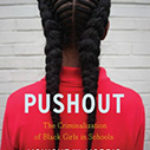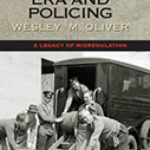Charlottesville 2017: The Legacy Of Race And Inequity

Editors: Louis P. Nelson and Claudrena N. Harold
Publisher: Charlottesville, VA: University of Virginia Press, 2018. 244p.
Reviewer: Clay Calvert | January 2019
I began reading Charlottesville 2017: The Legacy of Race and Inequity in October 2018. It was a sadly appropriate month. Eleven worshippers were murdered then in a mass shooting at the Tree of Life Congregation synagogue in Pittsburgh, Pa., by a man indicted on forty-four federal counts, including hate crimes. The accused, 46-year-old Robert Bowers, reportedly shouted “all Jews must die,” while committing what was labeled as the worst single-incident attack on Jews in United States history.
October 2018 also saw Megyn Kelly fired from her perch at NBC for defending the idea that blackface costumes were, at least years ago, acceptable on Halloween. Her remark – that blackface was “OK when I was a kid as long as you were dressing like a character” – came during an episode of her now-cancelled “Megyn Kelly Today” program and sparked instant outrage.
How does one explain such incidents, ranging from abject violence in one case to a verbal blow in another? Charlottesville 2017 is a timely collection of more than a dozen essays penned by professors from a diverse range of fields at the University of Virginia (UVA). The book provides excellent context for helping to better understand, both historically and today, how a combustible combination of forces – racism, antisemitism, free expression, violence and efforts toward equality – exploded at and around one the nation’s foremost educational institutions. The same forces, of course, could easily erupt elsewhere, so the lessons here – although grounded in a single venue – are more broadly applicable.
As its title evidences, the book hinges on the “Unite the Right” gathering of white nationalists – led, perhaps most prominently, by Richard Spencer – in Charlottesville, Va., in August 2017. It precipitated violence, including the death of 32-year-old Heather Heyer caused by James Alex Fields Jr. Fields, who gunned his car down a street packed with counter-protestors including Heyer, was convicted of her murder in December 2018.
But if there is an overarching, big-picture lesson to be gleaned from this multi-faceted book in which some essays are written from a first-person perspective, it is that the jury’s guilty verdict will not bring closure to the deep-seated problems that long simmered and then boiled over in UVA’s hometown.
It should be emphasized upfront that the University of Virginia Press deserves vast praise for publishing a book that unflinchingly unearths and exposes a long history of racism and white supremacy at UVA and in Charlottesville. To wit, we learn that UVA was once a national leader in eugenics, and that the Ku Klux Klan helped to fund construction of a campus gymnasium. As Professor R. Preston Reynolds writes, faculty “leaders created a culture of white supremacy justified by the science of eugenics, which argued all persons other than white men were inferior. Since the leadership of UVA was white and male, these ideas perpetuated the status quo.”
The book also examines the power of both public statues (in particular, those of “Lost Cause” Confederate icons such as Robert E. Lee) and private photographs (in particular, dignified black-and-white photos of African Americans from the early 1900s that served, as Professor John Edwin Mason explains, as “quiet acts of resistance”) in framing and affecting memories, meanings, identities (both real and imagined), and ideologies. The statues of Lee and Stonewall Jackson, one discovers, were erected in Charlottesville not immediately after the Civil War, but rather decades later in the 1920s as part of a movement that “reinvented white supremacy in the form of Jim Crow segregation.” Today, the statues constitute what Professor Elizabeth R. Varon calls “monuments to a false equivalency – to the idea that Confederates are equally deserving of a place of honor in modern America as Union soldiers.”
The power not just of images of individuals, but also of songs of symbolism, is explored in a very different context in Professor Bonnie Gordon’s essay. She remarks on how Richard Spencer, a University of Virginia graduate who majored in English and music, essentially lifted propaganda techniques from Leni Riefenstahl’s films glorifying Adolph Hitler for what Gordon aptly calls Spencer’s “operatic tour of hate.” “Spencer’s favorite prop – the (supermarket) tiki torch – is carefully chosen” from a Riefenstahl film, she points out. And Spencer’s decision to lead his followers singing “Dixie” came “with equally deliberate symbolic weight.” Perhaps Gordon’s most profound observation for educators everywhere, however, is simply this: “Richard Spencer is a harsh reminder that a liberal arts education does not necessarily defend against white supremacy, nor do efforts by the University of Virginia and other universities to memorialize enslaved workers.” Indeed, Spencer seemingly took what he learned and turned it into a well-scripted performance of hate that garnered the nation’s attention.
Professor Asher D. Biemann’s essay provides a fascinating and thought-provoking examination of what he argues “may be the oldest tradition of fear” – namely, antisemitism – and how it and “antiblack racism” were intertwined in Charlottesville in 2017. Antisemitism, Biemann observes, thrives on both fear and a sense of self-victimization, producing a superstition in which “there is a dark, powerful world dominating the innocent.” But another factor – one perhaps surprising at first – comes into play, Biemann points out: fun. “It is fun, actually, to hate,” Biemann writes, remarking on the “degree of pleasure and recreational zest such hateful ideologies offer to their followers.” To wit, he notes that “marching with tiki torches and self-made insignia of hate has a disturbing share in that tradition of fun.” And just as Professor Gordon contends that a liberal arts education does not prevent white supremacy, Biemann asserts that “antisemitism remains strangely impervious also to the ambitions of higher education.”
The book – rightfully so – also pays heavy attention to the First Amendment’s protection of speech and, in particular, its safeguarding of what many would consider hate speech of the kind spewed by Spencer and his ilk. The tome features a trio of solo-authored essays tied to the topic by Professors Frederick Schauer, Leslie Kendrick, and Risa Goluboff.
Schauer highlights what he calls “American free speech exceptionalism” – the idea that the United States is almost alone among nations in protecting hate speech. Pointing out that this approach “remains highly controversial,” Schauer emphasizes that the U.S. Supreme Court nonetheless has “made clear that not only does the Constitution not recognize the category of hate speech, but it also plainly prohibits targeting speakers because their message is racially hateful, hurtful, or outrageous.” Although this may be what the law currently is, Schauer adds that it is “entirely appropriate” to consider if this is what the law should be.
One reason for thinking the law ought to be different, Kendrick notes, is that the cost of protecting hate speech is “borne disproportionately by non-Christians and people of color. Our discourse on the First Amendment too often ignores those costs.” She also cites another cost – the steep financial one borne by public universities, such as the hefty police-protection tab the University of Florida incurred in October 2017, in safeguarding Spencer’s right to speak on campus in the face of a so-called heckler’s veto. A heckler’s veto, which is anathema to the First Amendment, occurs when an audience’s hostile reaction is allowed to silence a speaker. Under First Amendment principles, the burden rests on the government to protect the speaker. But as Kendrick points out, “it seems absurd that a fringe group should be entitled to what amounts to a public subsidy of their speech without absolutely no limiting principle.”
Ultimately, free speech and principles of diversity, equity, and inclusion need not be considered competing or oppositional forces. To believe they are irreconcilable is, to use Professor Goluboff’s fine phrase, to embrace a “false dichotomy.” The First Amendment, after all, protected civil rights marches and rallies, as well as liberal protestors during the Free Speech Movement on college campuses such as the University of California, Berkeley in the 1960s. Free speech also serves as an essential check on government abuses of power.
Perhaps now, then, is the time for heightened emphasis to be paid on civics education in both public middle schools and high schools, rather than on the privileged STEM quartet of science, technology, engineering, and mathematics. After all, as Professor Goluboff points out in her essay, many Americans wrongly believe that hate speech is not protected by the First Amendment. Without a rudimentary understanding of basic First Amendment tenets, it seems impossible for progress to be made so that we can better understand and rationally address the importance of both free expression and equality/inclusion. For now, as Goluboff writes, universities “can and should be a model of dialogue and discourse across difference, a model of how we simultaneously exercise free speech and embrace empathy and civility.”
None of this, of course, is easy, and dialogue itself does not ensure success. To wit, Professor Rachel Wahl cogently notes in her essay that “as many frustrated participants in formal or informal dialogues know, it is not enough for people to sit in a room together and talk.” Nonetheless, as Professor Gregory B. Fairchild writes, “we should take time in our daily lives to be intentional about opening spaces and creating opportunities that allow us to face what may be uncomfortable.”
Ultimately, Charlottesville 2017 covers a vast amount of territory from multiple perspectives in fewer than 250 pages. About the only thing missing is a response essay from Richard Spencer or the perspective of a white nationalist. Then again, perhaps Spencer already said enough simply by sparking the scholarship and essays that grew out of his contentious appearances in Charlottesville.
Clay Calvert, J.D., Ph.D., Professor and Brechner Eminent Scholar in Mass Communication, Director of the Marion B. Brechner First Amendment Project, College of Journalism and Communications, University of Florida.


